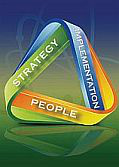Speaker
Na Young Lee
(KINAC)
Description
In 2013, the International Atomic Energy Agency, Department of Safeguards, applied safeguards in 180 States with safeguards agreements in force, with implementation of safeguards at over 600 facilities. To support the Department of Safeguards in fulfilling its mission, the training section holds over 100 training courses yearly to help inspectors and analysts develop the necessary knowledge, skills and abilities.
An effective training program must be able to adapt and respond to changing organizational training needs. Virtual training technologies have the potential to broaden the spectrum of possible training activities, enhance the effectiveness of existing courses, optimize off-site training and activities, and possibly increase trainee motivation and accelerate learning. Ultimately, training is about preparation - being ready to perform in different environments, under a range of conditions or unknown situations. Virtual environments provide this opportunity for the trainee to encounter and train under different scenarios not possible in real facilities.
This paper describes the training software developed for fuel fabrication facilities to be used by both national inspectors and IAEA inspectors. The model includes interactive modules to explain each of the six main fuel fabrication processes. It also includes verification instruments at specific locations with animations that illustrate how to operate the instrument, verify the material and report.
Additionally, the software integrates an evaluation mode to allow the trainee and the instructor to track progress and evaluate learning. Overall, the model can be used for individual training, or integrated into a training course where the instructor can draw on the virtual model to enhance the overall effectiveness of the training.
| Country or International Organization | Republic of Korea |
|---|---|
| EPR Number (required for all IAEA-SG staff) | 763 |
Author
Na Young Lee
(KINAC)
Co-authors
Byung Marn Koh
(KINAC)
Susan Pickett
(IAEA)

